Taking pot luck...
 Sunday, May 8, 2011 at 04:15PM
Sunday, May 8, 2011 at 04:15PM One of the things you learn rather quickly as a nature photographer, is not to set your heart too closely on any single quarry on any single day, for you cannot choreograph events. It is true that the more time you spend out there with your camera, the luckier you get, but you still never quite know what is awaiting you… or not.
I’ve taken to spending an hour out and about with my camera every day in the morning before work. It’s a great time to catch the wild animals on the move before they seek shade during the ensuing hot hours, and seems to be by far the most active time of day for the birds, many of whom you can see out in the open enjoying the morning sun after the chill of the night. So we go off on our daily forage, my camera and I, in search of anything and everything...
Yesterday morning, along one of the pretty sand luggas (dry streams, which flash flood during the rains), I heard the familiar screech of Orange-bellied Parrots. These birds can be the most frustrating birds to photograph, for they are curious and shy in equal measure…they always seem to be just beyond the trees, watching you and making a lot of noise so you know they’re just there, but never quite clear or close enough to get a good shot. Add to that their fantastically fast flying ability, making them almost impossible to photograph on the wing – a flash of orange and green, a gloating screech and – yet again - they are gone amongst the trees.
So, to a backdrop of parrot chat, I stopped the car in what I thought was a strategic spot, and I waited for the parrots to come to me. (Trying to photograph birds by driving around is hopeless for, by the time you have seen a bird and stopped the car, it is already long gone. Far better to choose a spot which is popular with the birds you’re trying to photograph, park up and wait quietly for them to come out to you.)
And so I waited…and waited... and, needless to say, despite the endless screeching just beyond the line of trees, no parrots appeared. Not to worry – instead, out of the bushland appeared a rowdy flock of White-bellied Go-away Birds, whose name belies their friendly nature. These large, chatty birds are the photographer’s friend: decorative and bold in equal measure, with a good dose of curiosity thrown in, which means they’re always keen to come over to you to see what you’re doing in their neck of the woods. So, in place of snapping parrots, I spent an enjoyable half hour with the Go-Away Birds, as they noisily sunbathed, preened, hopped and flew between the trees, before eventually deciding en masse that it was time to move on and they took off across the bushland:
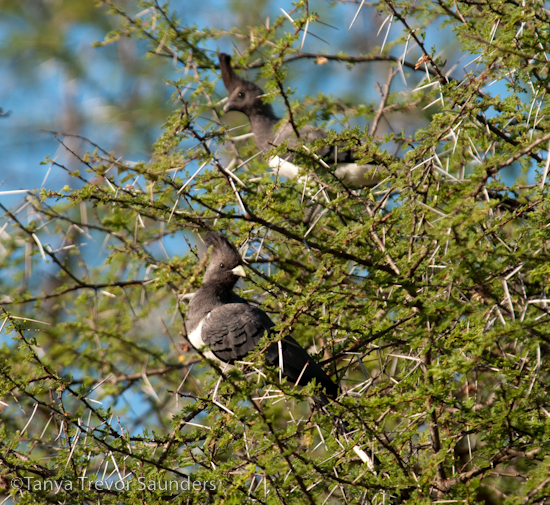
(Female with pea-green beak in front; male with dark grey beak behind.)
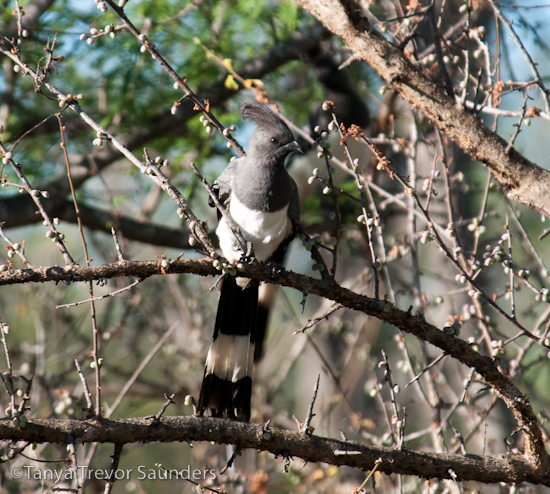
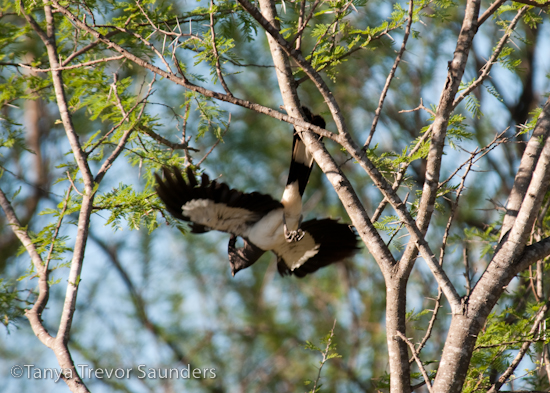
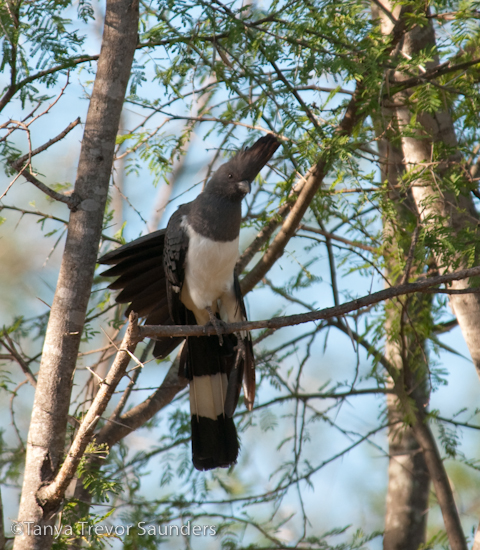
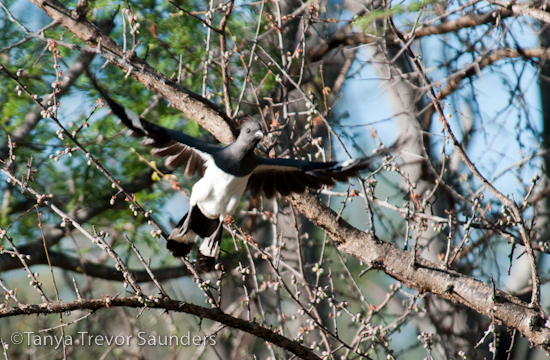
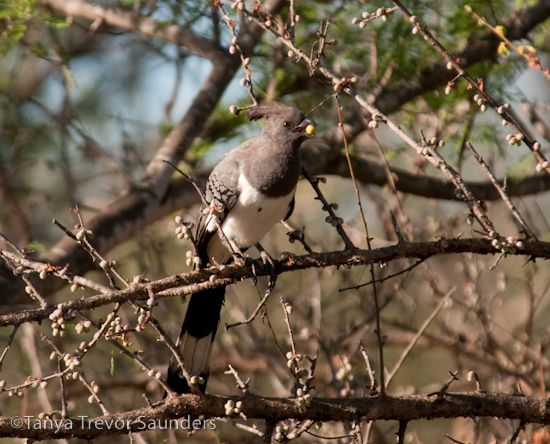
A quick snack on a ripening commiphora berry.
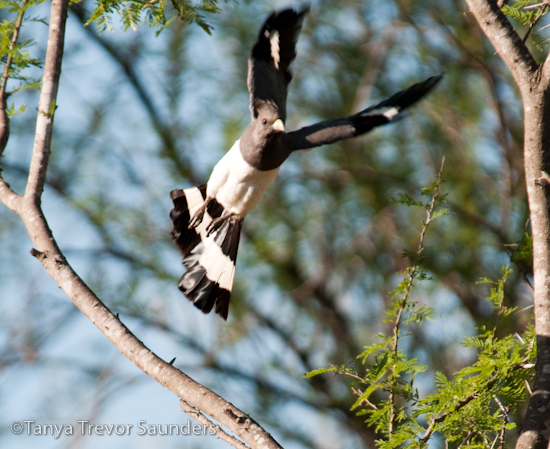
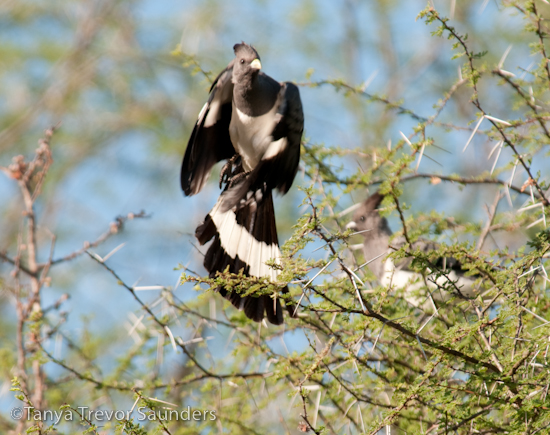
And away they go...
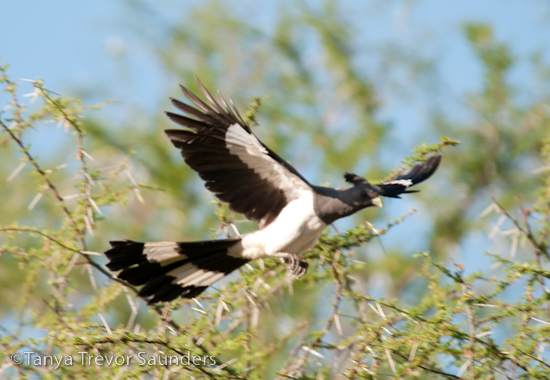
Late yesterday evening, a pack of 14 wild dogs were seen just a couple of kilometres from Kulafumbi, so this morning at first light I was up and out again, looking for these elusive creatures but – you guessed it – there was no sign of them anywhere. I know these dogs can be in the area one day and gone far away the next, moving great distances, but you’ve got to try your luck, haven’t you? So, no dogs and a very grey overcast morning, but guess who I bumped into en route? None other than a camera-friendly flock of parrots…shame about the lack of sun, but you can’t have it all. Here’s a rather handsome male Orange-bellied Parrot:
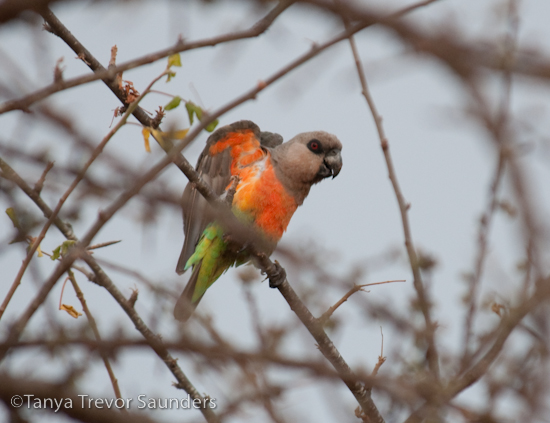
It was also a good morning for Lesser Kudu, that most elegant, most beautiful antelope of the bushland. My first sighting was of a gorgeous male, about 300 yards from our house:
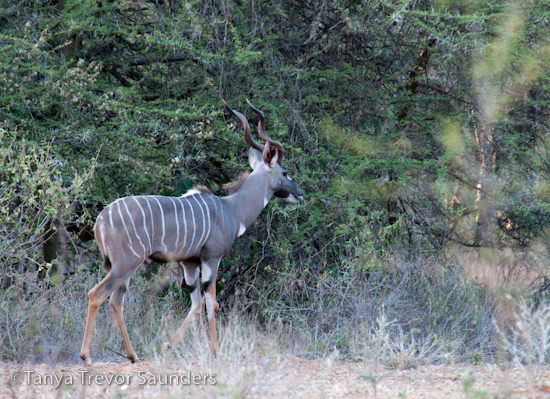
To follow, came a group of lovely does and youngsters on the edge of the dry Mtito River (site of yesterday’s wild dog sighting):
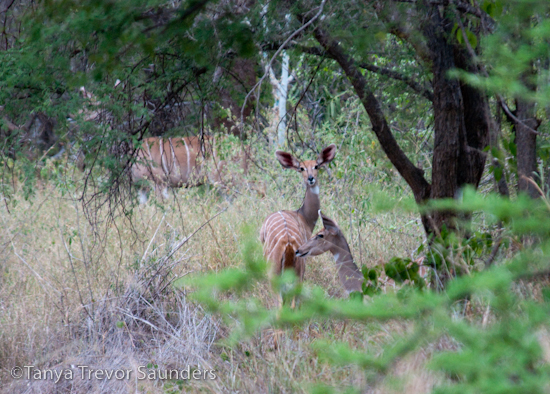
It’s no wonder you can drive past Kudu and miss them in the bushland more times that you see them – look how well these two blend into their background:
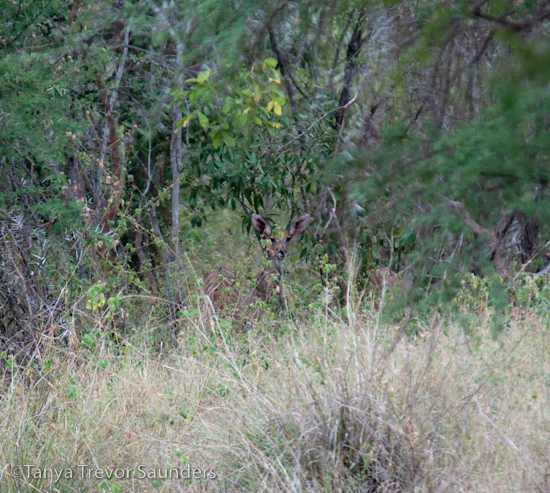
Mt Kilimanjaro was briefly visible, sandwiched between two thick banks of cloud, and catching a few rays of sun on its snow-scarce summit:
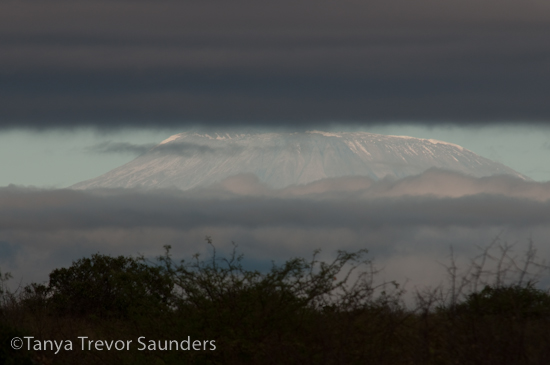
Because of the dull weather, I thought I would give the Bateleur Eagles a miss today, although I still planned to bypass their nest on my wild dog quest. As I approached their nest tree, I noticed the pair off to my right, in another tree about 200 yards from the nest. For good measure, seeing the pair of them together, I thought I’d take a quick shot after all. Then the male (seen here on the left) started grooming the female, whose bowed head shows how much she enjoys (and expects) such treatment.
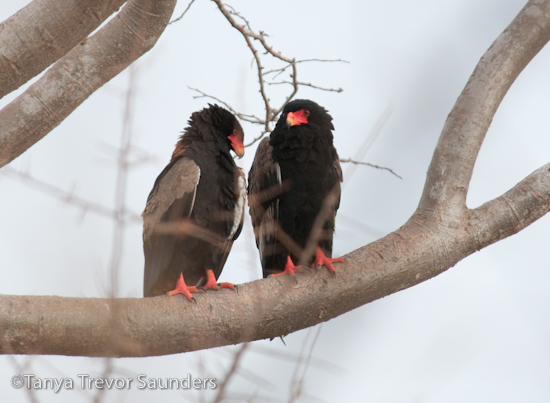
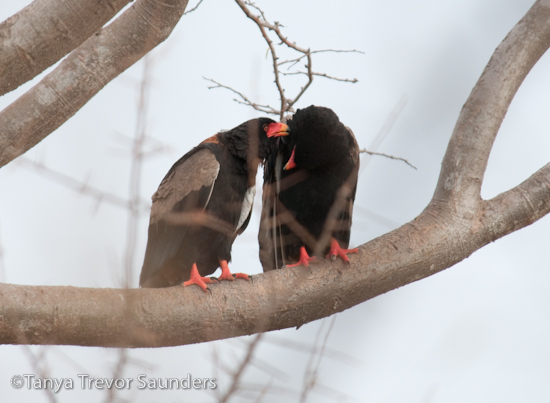
The male then started calling to the female and all of a sudden jumped on her back and the pair started mating. Well, with this kind of action presenting itself to me so unexpectedly, no-one can blame me for saying “so what with the weather and no matter that there are a few twigs and branches in the way obscuring my lens-view, I’m going to click away while the fun lasts!”
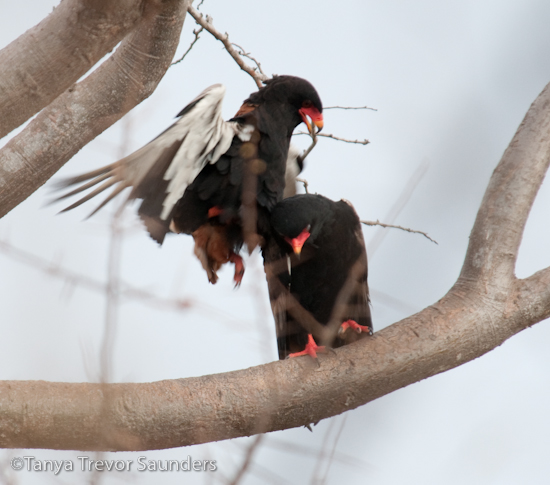
(Note the nictitating membrane we were talking about yesterday protecting the female's eyes as the male hops on board.)
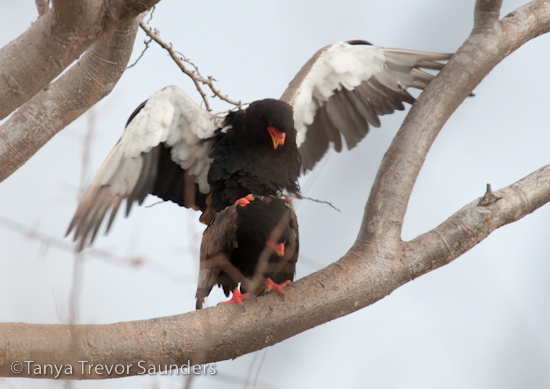
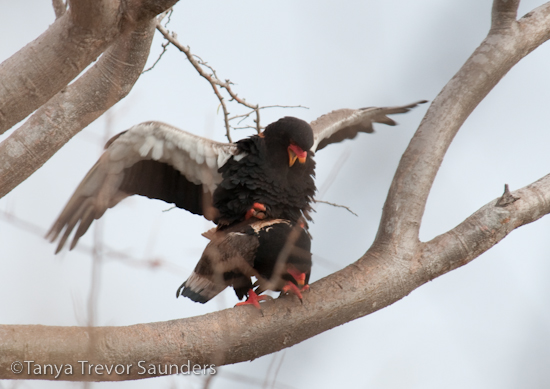
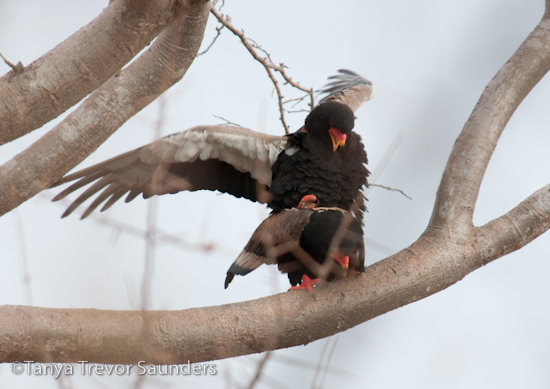
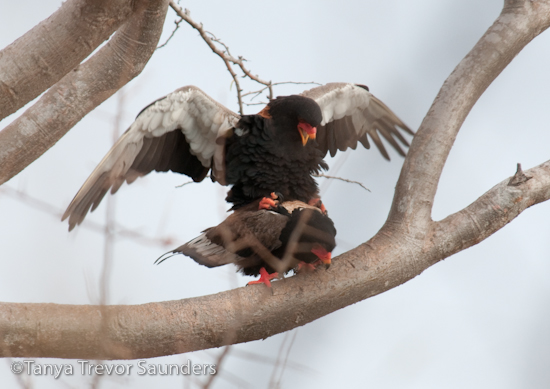
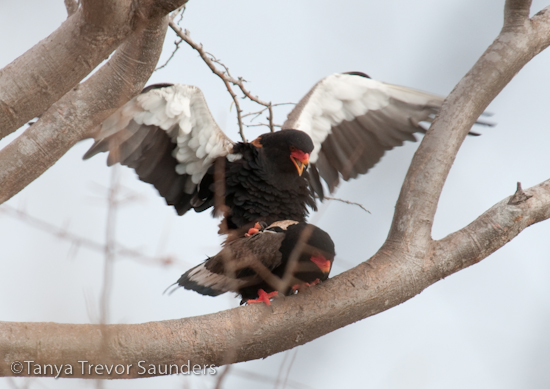
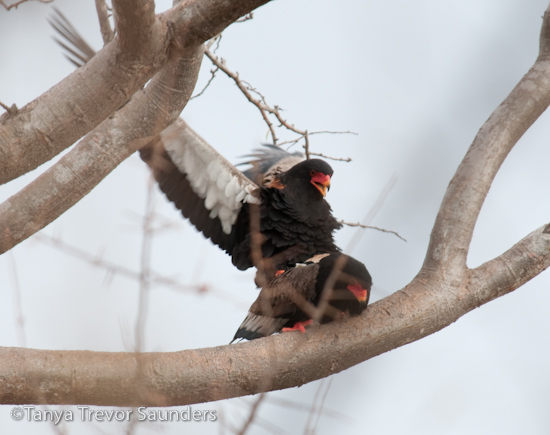
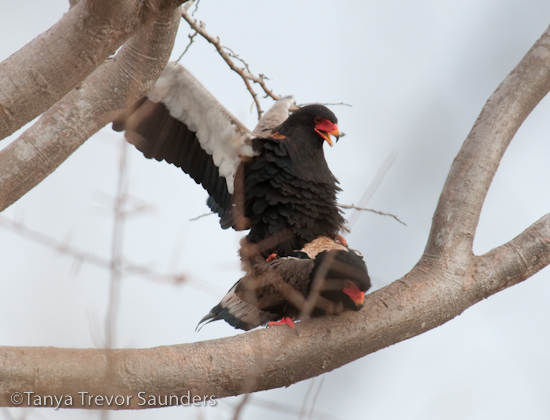
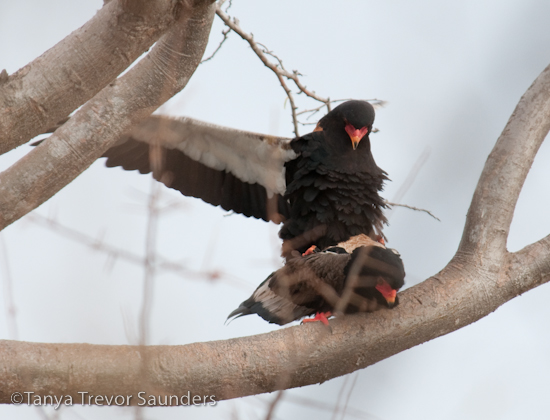
It struck me as rather amusing (and typical too, one might say) that after it was all over, the male immediately forgot his avid interest in the female and proceeded to preen himself, while the female, after a good shake to get everything back in place, had no option but to see to her own feathers too…
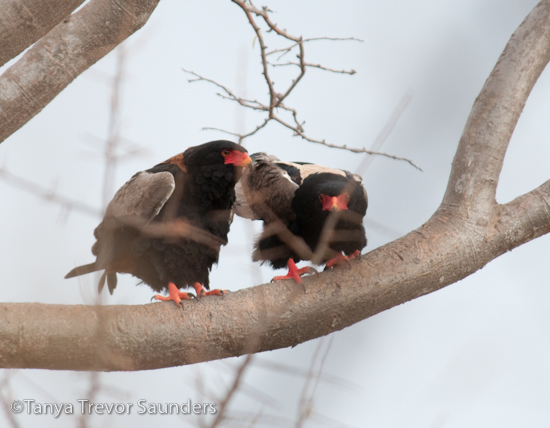
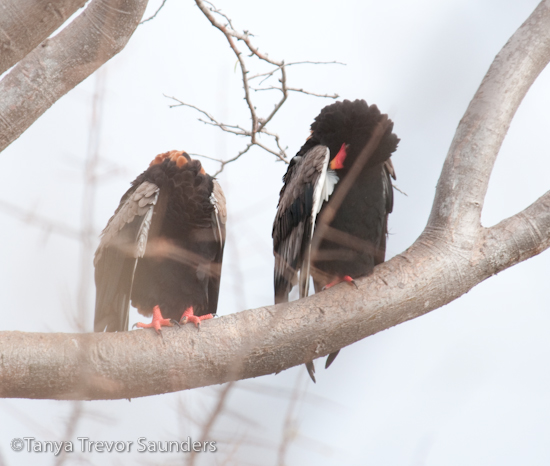





Reader Comments